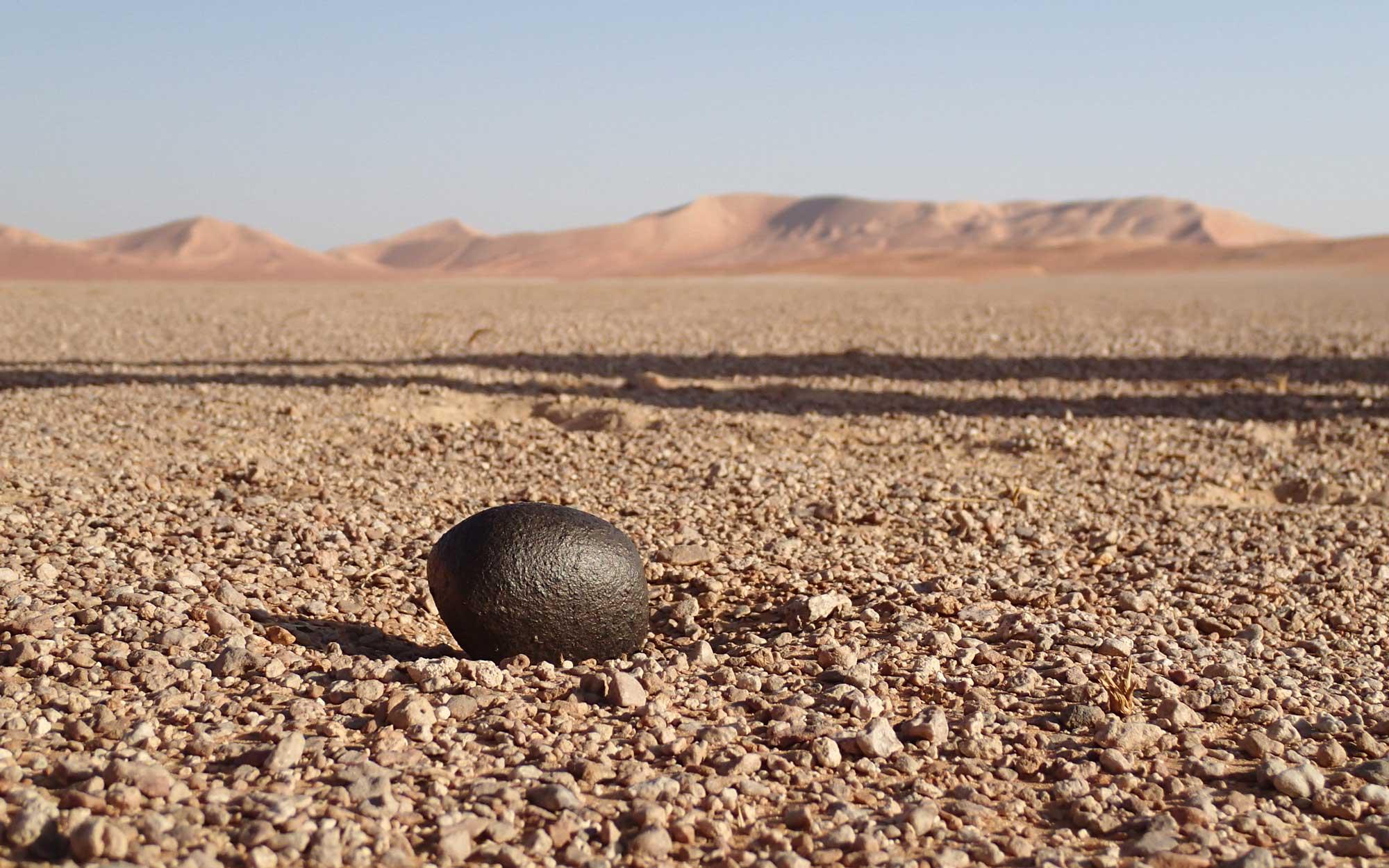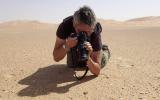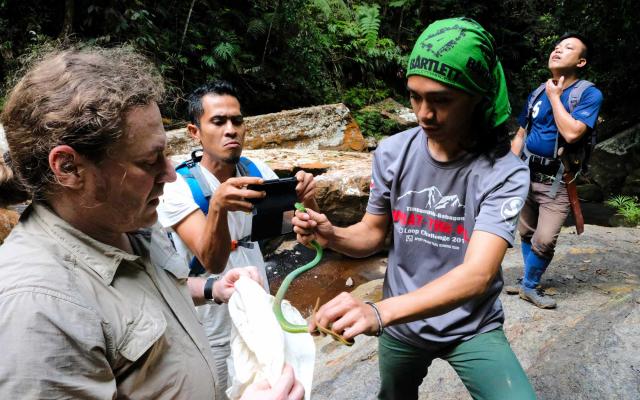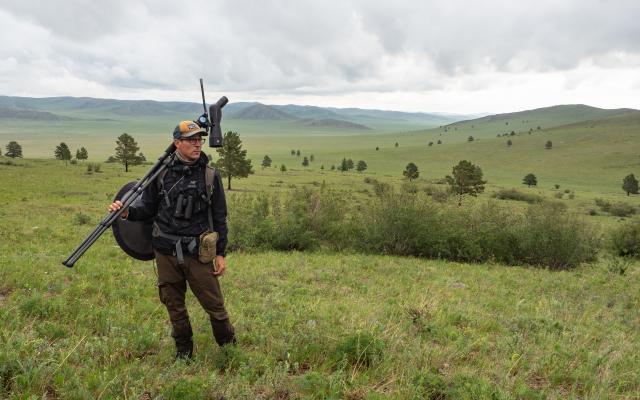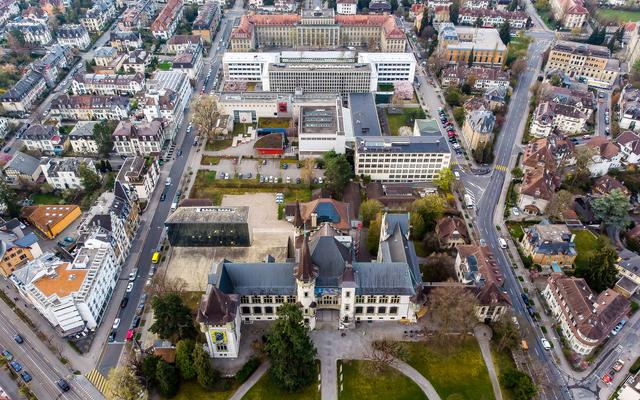When lumps of iron rained down over the Twannberg mountain and the neighbouring Jura peaks around 200,000 years ago, it must have been a pretty heavy shower. Over the last the last few years, scientists from the Natural History Museum Bern (NHMB) and the Physics Institute at the University of Bern have teamed up with numerous private meteorite collectors to find almost 1000 fragments of an asteroid which fell in the region north of the Bielersee. The "Hunters of the Hidden Treasure", as the crew was affectionately described in a special exhibition dedicated to the Twannberg Meteorite, were particularly successful on and around Mont Sujet, where they discovered a strewn field that was still largely intact. On the basis of the debris they found, the asteroid appears to have been 4 - 20 metres in diameter before the explosion, and to have weighed at least 250 tonnes. Beda Hofmann couldn't believe his luck: "To find something as significant as this right on our doorstep is like winning the lottery," the scientist declares.
When a farmer's wife found the first of these fragments in a field in 1984, there was nothing to indicate that a dramatic shower of rocks may once have fallen from the sky. It wasn't until Marc Jost found a second fragment of the iron meteorite in an attic that anyone began to take an interest at all. The chance find turned Jost, a carpenter by trade, into a passionate meteorite hunter. His curiosity and persistence were important factors in the discovery of the Twannberg Meteorite. Not only did Jost find numerous fragments on his own by tirelessly searching the area with a metal detector and a spade, he also used his contacts in the meteorite hunting scene to get over 50 collectors from all over the world to join him.
The exposure of what would turn out to be a scientific sensation was then down to a whole host of other people. Maunel Eggimann and Hannes Weiss made a major series of finds in the Twannbachschlucht gorge, and it was ultimately this which led Hofmann to realise that an iron meteorite shower must once have fallen over the Twannberg region. Hofmann assumed the leadership of a group made up of scientists on the one hand and meteorite collectors on the other, and between 2014 and 2016 the team carried out five search missions to look for hidden remnants of the shower. Not only was the campaign extremely successful, it also increased the group members' respect for each other no end. "The collectors sometimes went out for hours or days on their own. Without their stamina and perseverance we would never have found as much as we did," believes Hofmann.
Some of the fragments found were presented by the NHMB at the year-long special exhibition about the Twannberg Meteorite that ended in August 2017. The exhibition was the preliminary climax of a project which, in the near future, may shift is focus towards the area around the Neuenburgersee, where according to Hofmann: "there's a chance that we might make more major finds."
The Twannberg meteorite
The Twannberg Meteorite is unusual in many respects:
- It is the largest of the eight meteorites known to have fallen in Switzerland, and the only one of which more than one fragment has been found - i.e. whose strewn field is known.
- The strewn field is one of the largest in Europe.
- Along with Morasko (Poland) and Muonionalusta (Sweden) it is one of the most significant iron strewn fields in Europe.
- The iron which makes up the meteorite has a particularly low nickel content. There are only six specimens of this type of meteorite in the world, and they date from just 2 million years after the birth of the solar system, which took place 4,567 billion years ago.
The Oman project
Beda Hofmann has found the perfect place to escape the Swiss winter. When the trees here are stiff with frost, Hofmann can be found the desert. Since 2001, the irresistible pull of meteorite research has been taking him and a team of colleagues to look for rocks from space in the deserts of Oman and Saudi Arabia. Luxurious the expeditions are not, however. The researchers travel by four-by-four into a region with a larger surface area than Switzerland, where they spend hours on end during the day searching for extraterrestrial gravel. At night, the group bivvies in the wilderness, sleeping on camp beds under the stars at temperatures sometimes just barely above freezing. The parched limestone of the desert in Oman is ideal terrain for the scientists, as the sand is light coloured enough for them to see the black stones, pebbles and grains with the naked eye. Accordingly, the collection which the research group led by Hofmann and his Geneva-based colleague Edwin Gnos has built up is already impressively large, currently (2017) numbering over 6000 rock samples. The Oman Meteorites Collection is unique: "There's no comparable collection from any other hot desert region anywhere in the world," Hofmann explains. The finds provide evidence of approximately 1000 meteorite showers - more or less equivalent to the number of showers observed globally in the last 200 years. As well as some spectacular specimens, the trips to Oman and neighbouring Saudi Arabia have generated a wealth of scientific output. Hofmann has created a database which already contains around 30 journal articles, over 70 term papers and a dozen dissertations and theses.
The Sultanate of Oman has been officially involved in the research from the start, and no end to the project is scheduled as yet. The total area under investigation measures around 50,000 km2, and the meteorite researchers have only systematically searched just under three percent of it to date (2017). The chances that Hofmann will get to spend a few more months in the desert, then, are high.
- Sayh al Uhaymir (SaU) 094, Martian meteorite, 223 g, discovered on 8.2.2001. This fragment is part of a strewn field created by a number of Martian meteorites.
- Sayh al Uhaymir (SaU) 169, lunar meteorite, 206 g, discovered on 16.2.2002. This meteorite is made up of "KREEP", the material which was the last to crystallize when the moon solidified. KREEP is strongly enriched with uranium and thorium.
- Shisr 043, iron meteorite, 8.4 kg, discovered on 21.1.2003. The only fresh iron meteorite to date amongst the over 39 000 meteorites from Oman contained in the Meteoritical Society's database.
- Jiddat al Harasis (JaH) 073, strewn field, discovered in January 2002. Large stone meteorite shower (chrondrit L6) around 15 000 years ago which extended over an area measuring 19x6 km.
- Jiddat al Harasis (JaH) 091, strewn field, discovered in October 2002. Largest strewn field in Oman, and at 52 km in length one of the largest in the world. The over 700 stones found here together weigh at least 4.5 tonnes. The shower was about the same size as that which fell on 15 February 2013 near the Russian metropolis Chelyabinsk.
Rafrüti: Rafrüti is the first meteorite find ever recorded in Switzerland. It was discovered in 1886 by the farmer Andreas Zürcher, who was digging over a field of potatoes near Lüderenalp in the canton of Bern when he came across a large lump of rusty iron. For years, the nugget was used by the peasant family as a source of heat - a sort of primitive radiator. It wasn't until a teacher, Fritz Wiedmer from Wasen in Emmental, heard about the rare stone that the penny dropped. Via the enterprising Fritz Meister, himself the keeper of post horses, the meteorite came into the possession of the Natural History Museum in 1900. The specimen weighs approximately 18.2 kg and has the lowest iridium content of all known iron meteorites.
Ulmiz: The 10 fragments weighing 76.5 g in total are part of a stone meteorite that crashed on Christmas Day 1926 onto the forecourt of a farm in Ulmiz. The stone is mainly made up of the minerals olivine and enstatite.
Utzenstorf: The Utzenstorf stone meteorite consists of three pieces which together weigh 3.422 kg. A chondrite, its main minerals are olivine, enstatite, nickel-iron and troilite. All three pieces came down as part of a shower which was observed in Utzenstorf on 16 August 1928.
Black Beauty: unique Martian meteorite (NWA 7906, 7907, paired with NWA 7034). Black Beauty's journey began millions of years ago on Mars. One day, the Red Planet was hit by an asteroid and the stone in question was catapulted into space. It flew so far, in fact, that it didn't fall back to Mars but ended up on a trajectory towards Earth, where it finally landed in the Western Sahara. It was found by a Bedouin, who took it to Morocco and sold it to the Bern-based meteorite collector Marc Jost. Because Black Beauty is such a rare specimen, the NHMB was prepared to pay handsomely for it. The purchase was made possible thanks to the support of the Association of Friends of the Museum. The meteorite weighs just over 80 g and cost 165,000 francs. Beda Hofmann predicts that Black Beauty will keep him and his team of researchers occupied for decades. "It's bound to reveal things about Mars that have been concealed up until now," the scientist anticipates.
